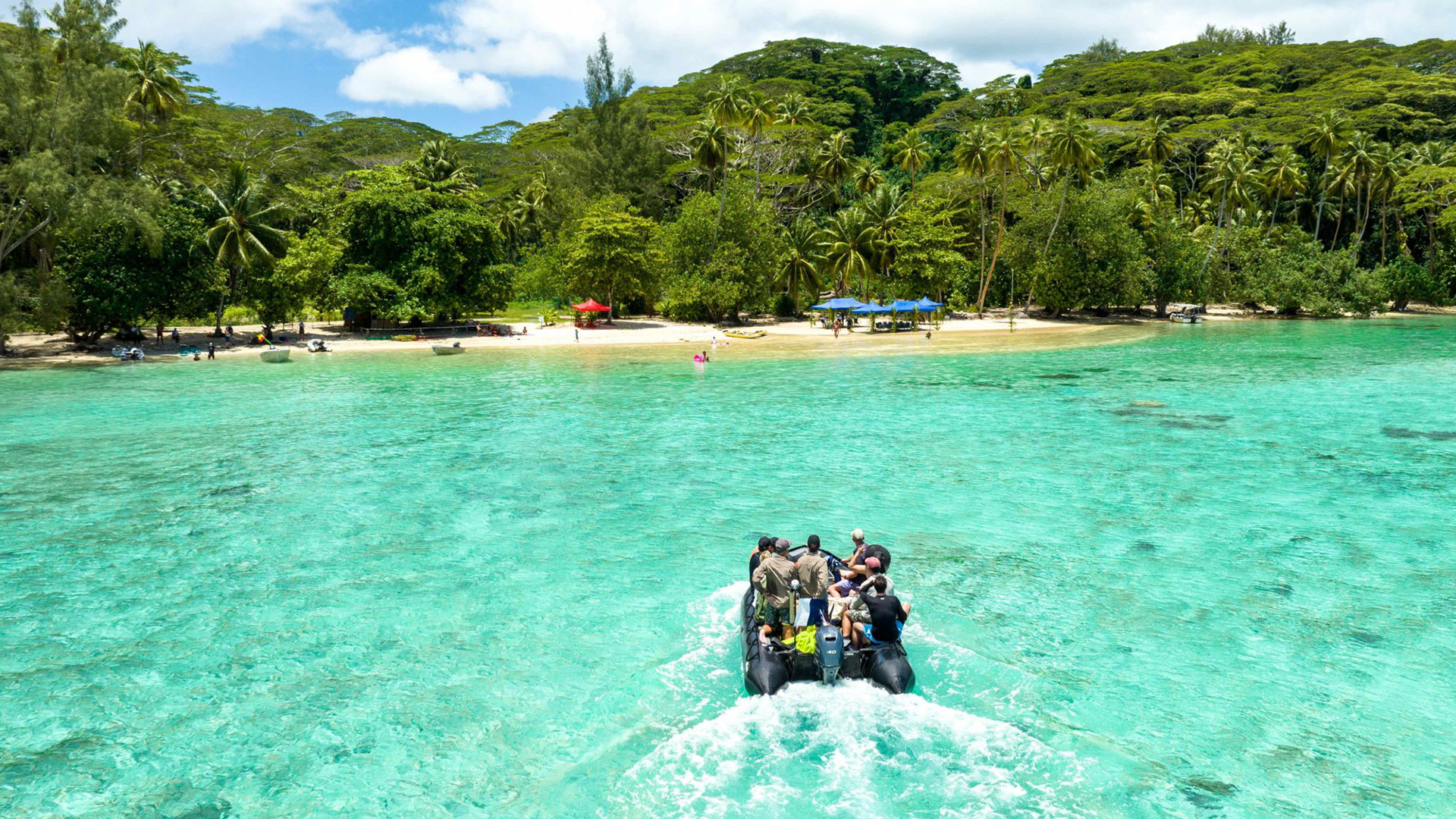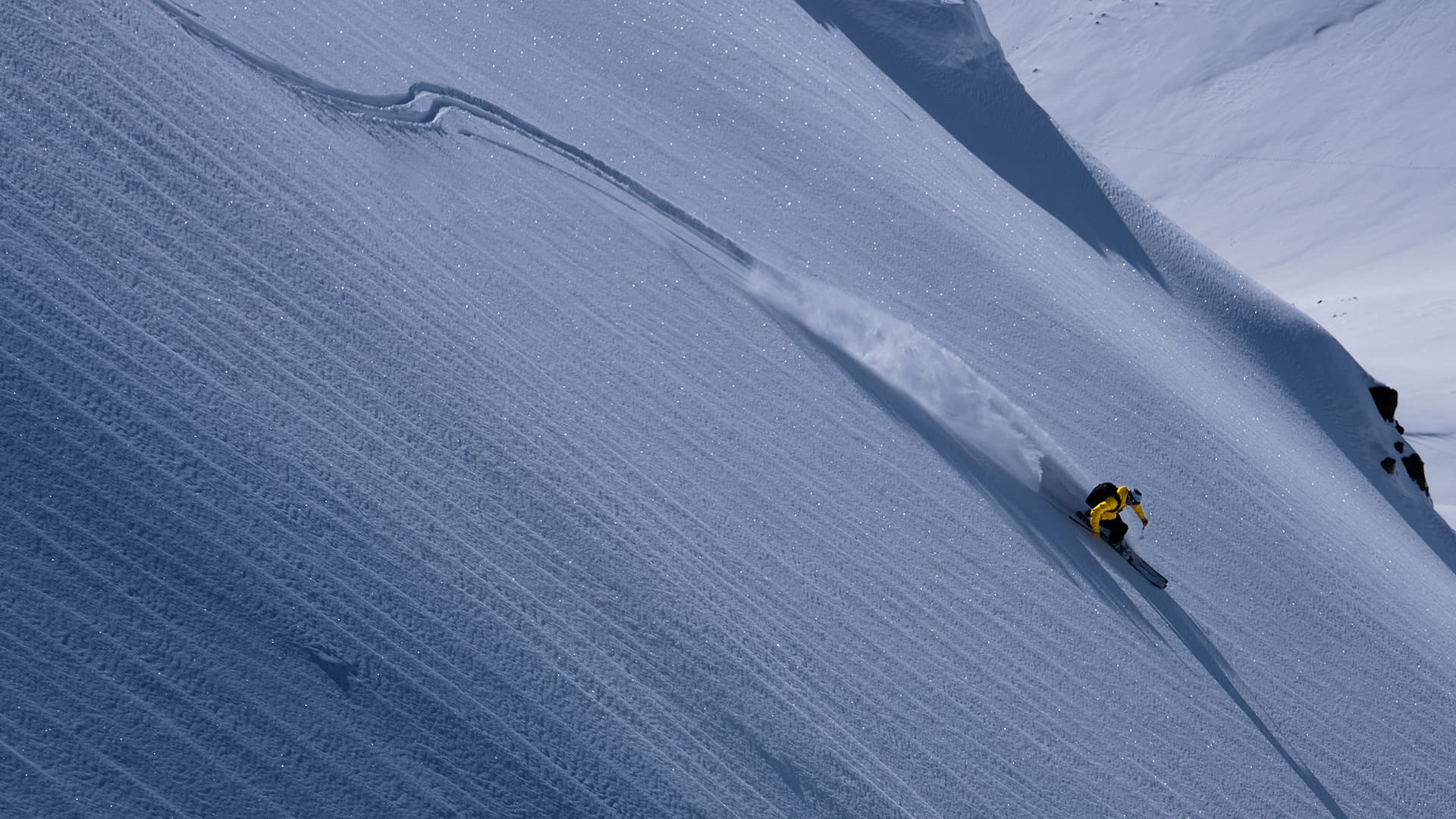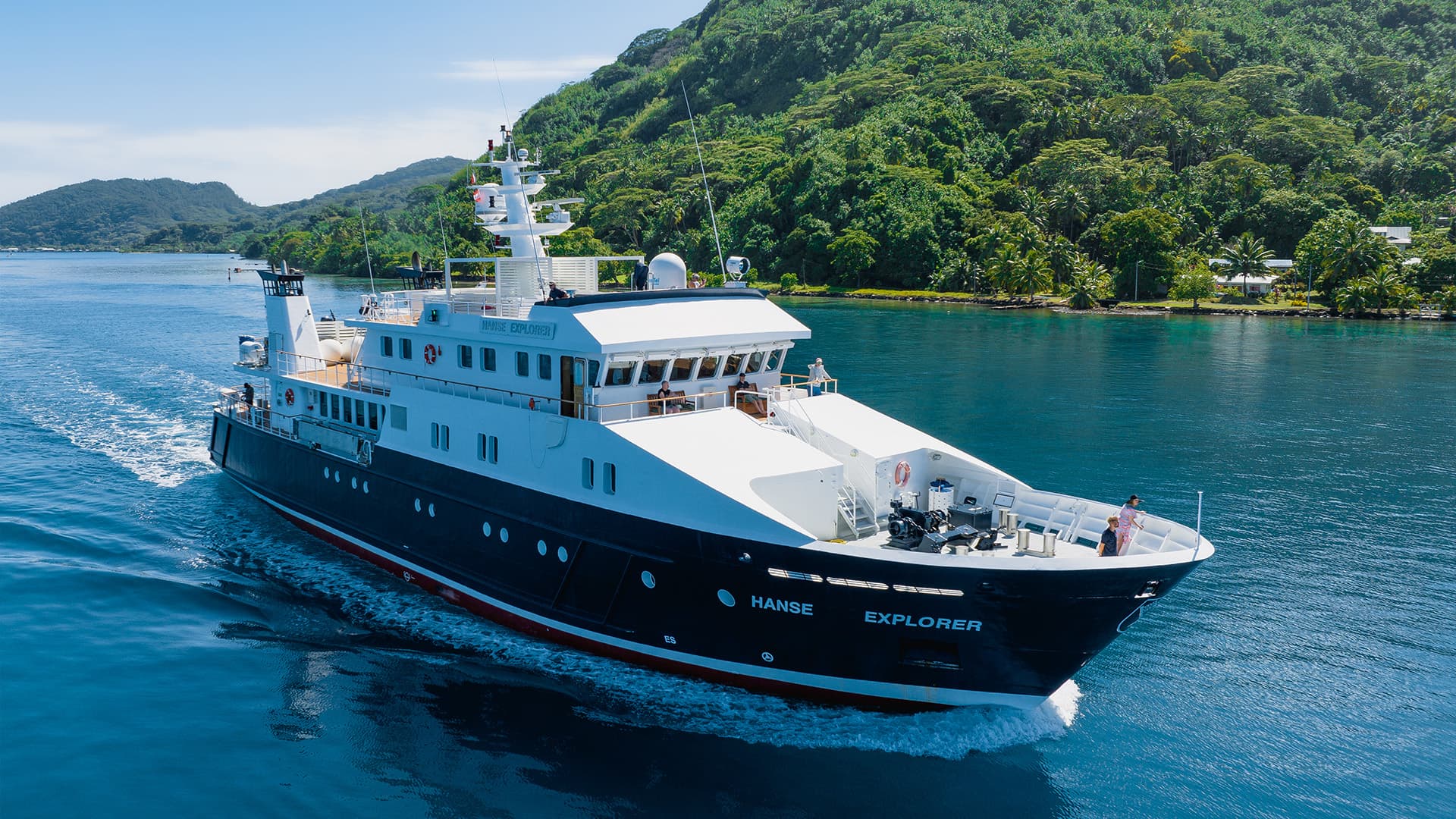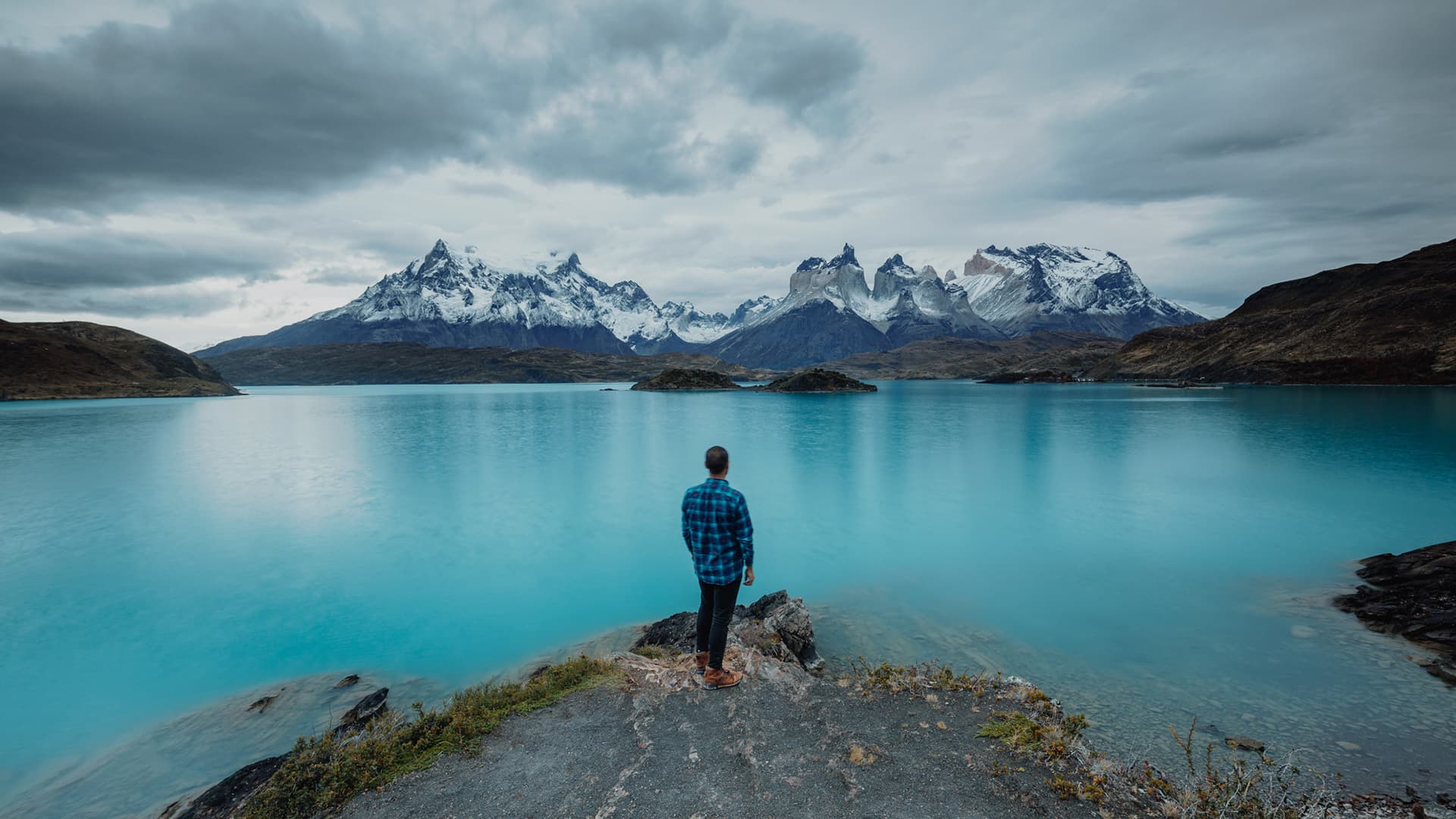Corey Seymour of Vogue recently joined EYOS Expeditions for an adventure into the crystalline waters of French Polynesia aboard Hanse Explorer. Read more about the thrill of the tropics below.
Call me jaded, or cynical—or, as all jaded cynics prefer to be described, “a realist”—but when I was told that one of the activities during my six-day Tahiti yachting excursion was “the opportunity to swim with humpback whales,” I imagined this possibility as, first, a longshot (pending a miraculous convergence of weather, migratory patterns, and sheer luck) and, second, as a spectator sport. It conjured a vague image in my mind: me, barely submerged in the water, staring out through my snorkel mask at a distant, blob-like dark mass in the ocean maybe a hundred or two meters in front of me.
The reality, though, was a very different story. Here in the ridiculously warm and luxurious waters between the French Polynesian islands of Tahiti and Moorea, I’m floating and looking, looking, looking—until a one-ton humpback whale seems to come out of nowhere, twisting; seemingly playfully?—and turning so close to me that I could touch it. It’s exhilarating, and I find myself resorting to the sort of ridiculous hand gestures of excitement that are all the communication I have with my fellow divers. (Two thumbs up, somehow, doesn’t seem to capture the awe.) But my fellow divers aren’t giving me a thumbs-up back: They’re pointing down, directly below us, their eyes the size of saucers.
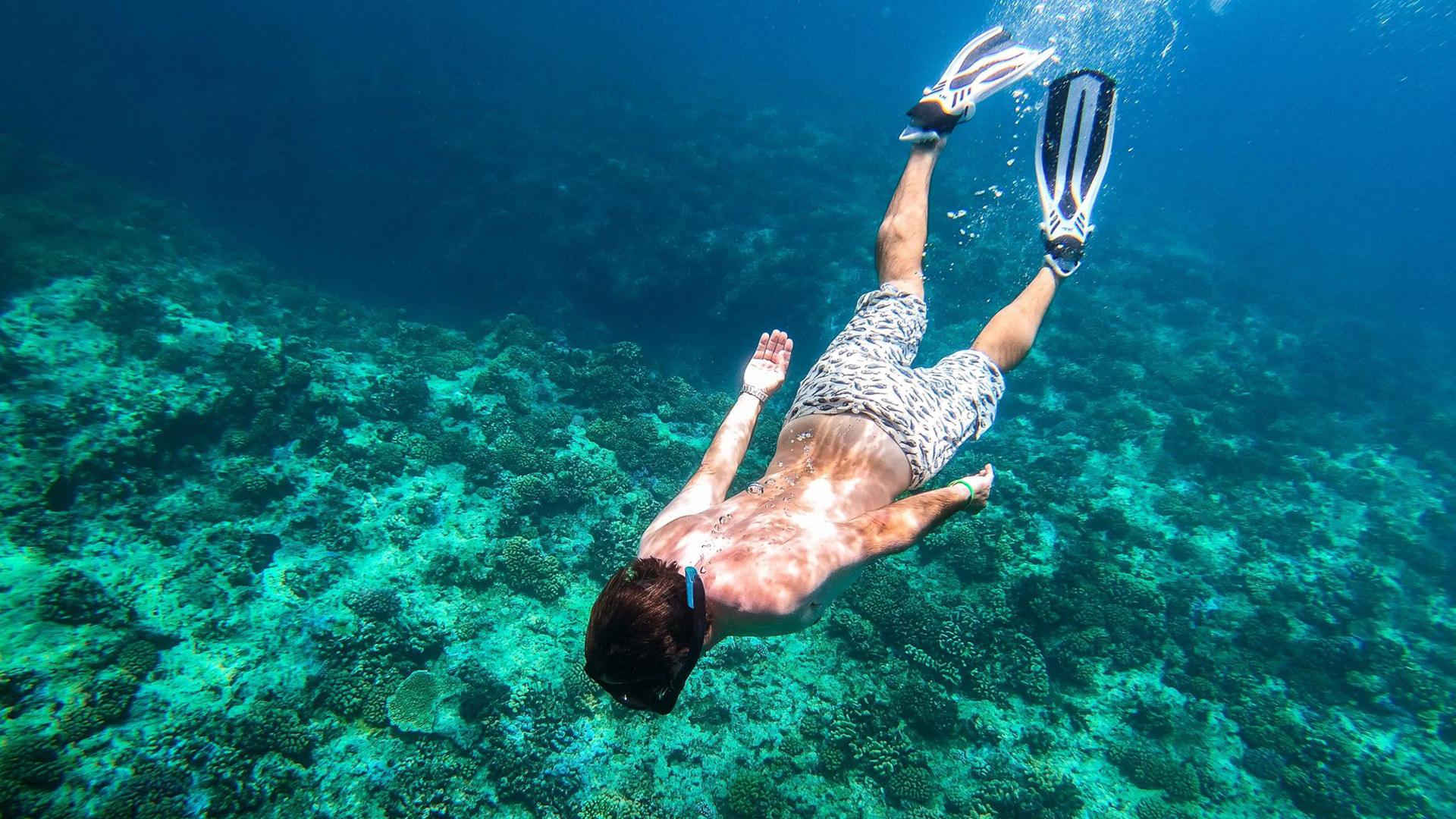
And then I look down. What’s directly below me—and quickly rising, in my exact direction? That one-ton whale’s mother. My first thought: Wishfully assuming this mother doesn’t, you know, open her mouth and consume me for a snack, I am going to be carried by her snout out of the water and given the ride of a lifetime. Panic-stricken visions of breaking continuums of space and time to flee the scene are, a moment later, replaced by the realization that, if I simply pull my arms inward and lean backward, this 40-foot-long, 35-ton humpback will easily miss me.
So much for spectator sports. This—like the rest of my six-day adventure aboard and around the Hanse Explorer expedition yacht with EYOS Expeditions—was as thrillingly hands-on as I could handle
For starters: “Expedition yacht” means a few things. Essentially, it’s a yacht that’s big enough and strong enough to travel long distances between ports—self-sustaining, to a point—and one that’s purpose-built to allow its passengers to do more than merely luxuriate. EYOS charters private yachts of various sizes for expeditions around the world, holding several world records and world-firsts, including the furthest south that any vessel in history has ever reached, to the first commercial expedition to the Mariana Trench, a place seen by fewer humans than the International Space Station. If you wake up one morning with a sudden urge to heli-ski (and/or chase after polar bears on icebergs) in Antarctica, they’re who you call. Although lest anybody think I set out on my trip to, you know, set a record or prove something, I do feel a need here to point out that my temporary home, the 156-foot Hanse Explorer, also has six double staterooms, an expansive owner’s suite, an exquisite food and beverage program, and a hot tub and sauna.
One of the first things I learned after landing in Papeete, the capital of French Polynesia on the Island of Tahiti, is that if you came to experience Tahiti as the sort of wild, unspoiled natural paradise that most people think it is, the first thing you should do is to get away from Papeete—the area’s commercial hub—and the island of Tahiti itself. As perhaps should be a rule of thumb in such situations, the paradise is elsewhere. I simply hopped aboard the Hanse Explorer and woke up the next morning off the coast of Huahine, where the Hawaiki nui va’a—essentially, the outrigger-canoe Super Bowl of French Polynesia, with teams of six rowing 80 miles from island to island over three brutal days—is taking place within view of my starboard-side cabin window. (This festive kickoff to our adventuring was, thankfully, made for spectating, not participating.)
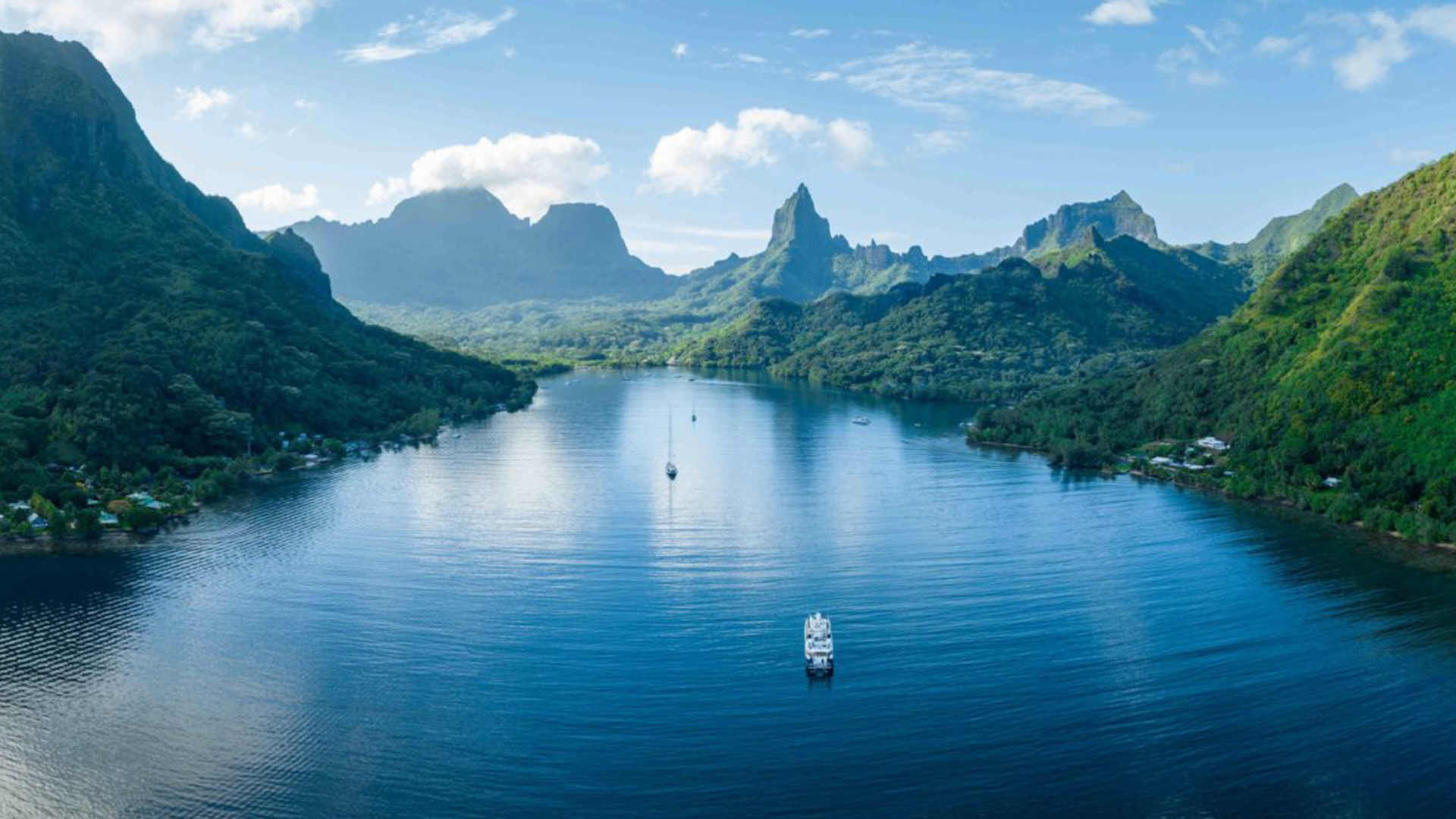
Our next days saw us traveling—at a breezy 11 knots under the steady hand of Captain Ralf Gütlein—toward Taha’a, where we anchored and set off in Zodiacs (the inflatable Ubers of the watery realm) to visit the drift-snorkeling heaven of Coral Gardens. There, you position yourself in the water at the top of the flow, then let the current take you on an underwater amusement park ride through vivid stashes of coral populated by a kaleidoscopic array of pufferfish and triggerfish, with sea cucumbers dotting the sea floor and stingrays and spotted eagle rays swimming and mating mere feet away.
We skirted the island of Raiatea—with Bora Bora impressively hulking in the distance—en route back toward Mo’orea, where we anchored in the idyllic Cook’s Bay for a spell. If the entire expedition so far had been paradisiacal, this was the sublime cherry on top of paradisiacal, with the sort of views (yacht, sea, picturesque mountains, morning fog) that would be impossible to believe, were you not actually there.
We took one afternoon merely to play on and around one of EYOS’s other expedition yachts, the massive 285-foot Arctic, which just happened to be anchored a few hundred yards away in Cook’s Bay. It offered, for our pleasure, a full-time staff of 28, as well as an array of jet skis, water skis, Seabobs, kayaks, and scuba diving equipment.
After wearing myself out on all of the above, I found myself ambling toward the overstuffed luncheon table of the Arctic P when a crew member mentioned—seemingly innocently—that “I think they’re all up on the top deck.” I nodded and climbed up there to find Stein Retzlaff—a photographer and videographer who’d been documenting our trip—standing at the ship’s bow, many stories above the water below. He was facing me, his back to the water, and—with the encouragement of a few others, already in the water far down below—he suddenly leaped up, arched his back, and executed a flawless backflip before hitting the water below after what seemed like forever.
Simply witnessing this sent a shiver up my spine. What I didn’t realize until right then, though, was: I was next in line.
I was reminded of something that our expedition leader Ian Strachan had told me earlier, about the different types of fun. Level one fun was something fun at the time you do it; level two fun, though, was something fun only later, when you remembered it or told others about it. (There was also a little-acknowledged level three fun, which is something that only other people think is fun, but let’s ignore this.)
What we had here was level one terror, and—hopefully, theoretically—level two fun. And then I thought back on how I had imagined this almost otherworldly trip so long ago, on paper—in short, as something to be witnessed, rather than experienced. I pushed everything else out of my head, closed my fists and my eyes, and took that leap.
I skipped the backflip, though. I mean: Why show off?
A version of this story first appeared on April 6 2023, in Vogue under the headline “Once in a Lifetime: Expedition Yachting (and Swimming With Whales) in French Polynesia.”
